“Is this really Urbex?”
My question was relevant as our target was a ruin. Being off the visible track and not open to the general public allows it to fit into that category, just barely.
I do wish @anidiotexplores would get his mojo back for finding weird places such as this. I know he will read this and ponder my words. While it may not be super interesting, just getting to it was half of the fun.
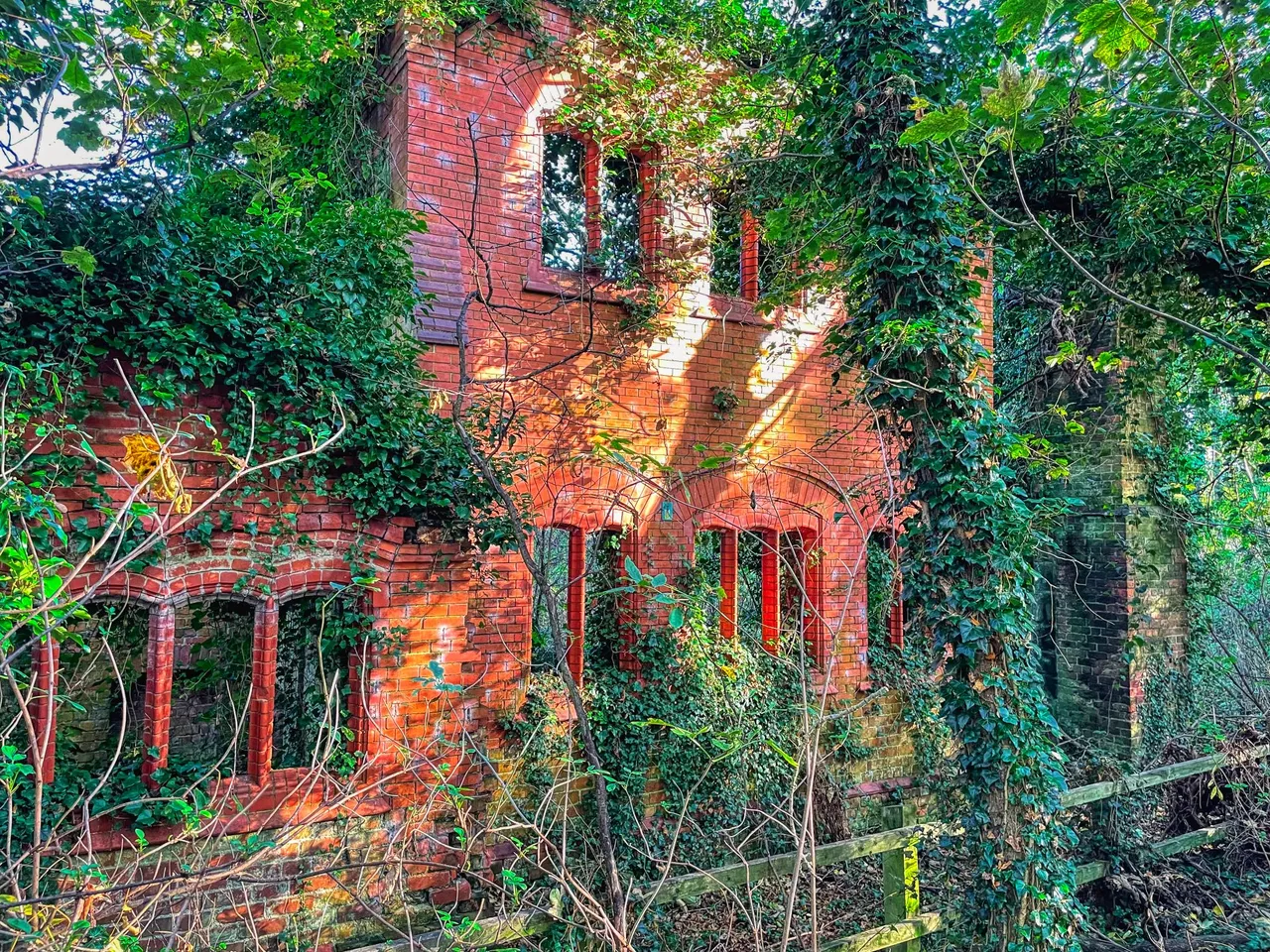
Close by was one of those rural food outlets, the type that sell home grown produce that, while better quality that your average supermarket tend to command outlandish prices.
As tempting as it was to dump my car on their car park and scramble through some thick brambles and gorse to attain our goal, I know we would have mustered some strange looks and worse, the fucking shop owner would come out giving us mouthy words.
No, that would not do, and so a short walk would be needed, as well as a back entry route down a farm track and off into the forest around the left side. The amount of barbed wire and ‘trespass signs’ present confirmed my suspicion that ‘Lydiate Hall’ was not in the public domain.
The Ireland family that worshipped at St Catherine's Chapel (also in Lydiate) lived here after Lawrence Ireland built the hall circa 1470 and his initials can be seen carved into the doorway from the hall.
Now only medieval remains exist after the eastern part of the Hall was destroyed in about 1780 and then abandoned completely by the late 1800s.
By 1940 it was a complete ruin and the old barn and outbuildings now house a farm shop, The Hay Lofte Coffee Shop and duck pond.
“Where is the damned place?”, I growled to @anidiotexplores as we went in a half-circle to keep out of eyeshot from both the lane and the nearby expensive farm shop. It was here, and yet we somehow could not see it.
A deer shot out from behind a bush, startling the both of us as we closed in on the ruins of the 16th century hall. ‘Lydiate Hall’ is a grade listed building, though there is little left.

Through the green and browns of ‘fall’, we spotted a large red-bricked house that was not going to give us any trouble gaining inner entry.
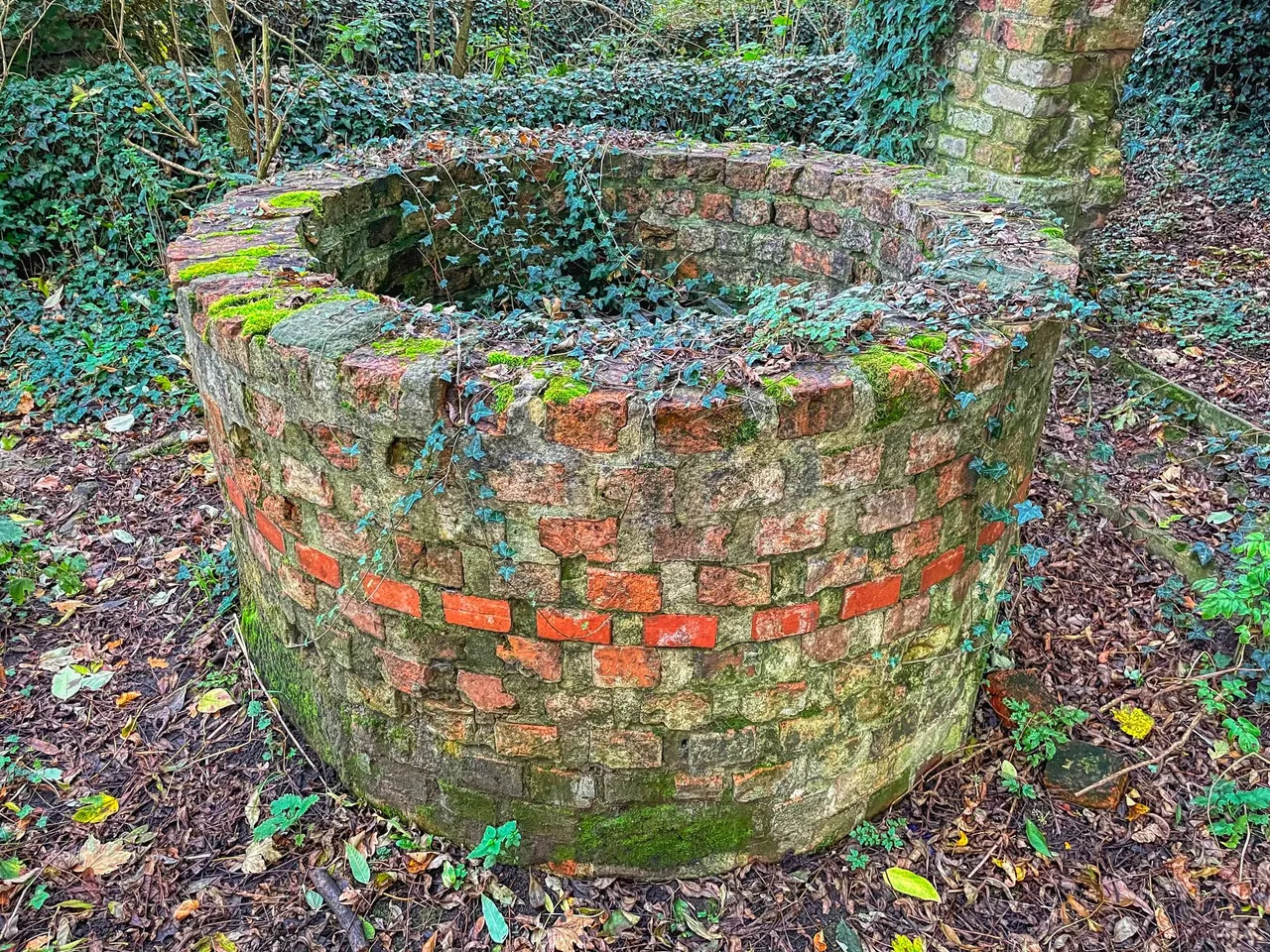
Next to it I noticed something that looked like a well. In 1566 or thereabouts, there was no running water from any taps. If you wanted to quench your thirst it was via this deep hole.

Someone had wisely added a grill to the entrance. Underneath was a huge drop, and falling down there meant instant death. How many peons, or unwanted pregnancy bearers had been pushed I thought?
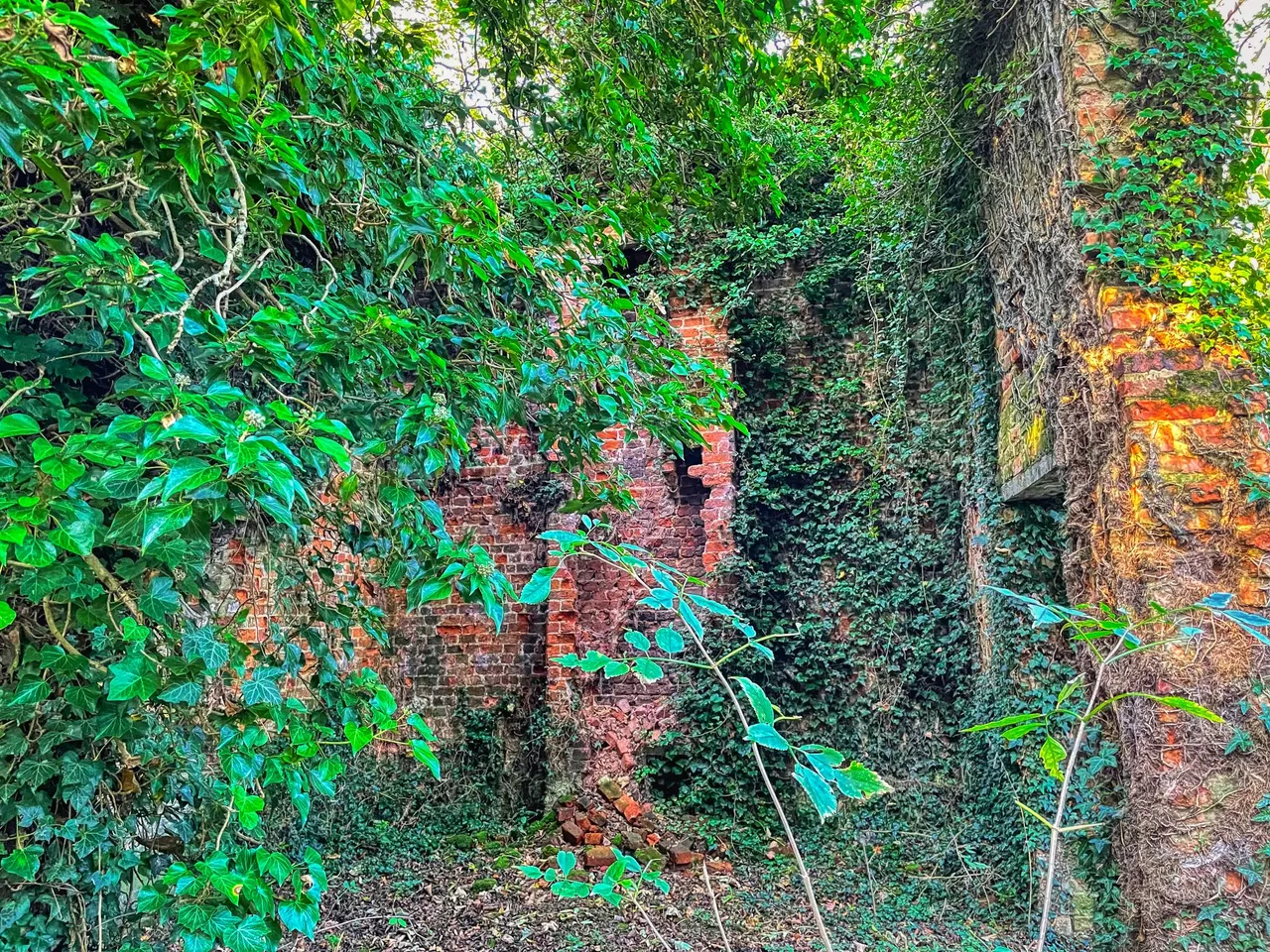
Clear shots of ‘Lydiate Hall’ were in short supply. The entire building was covered in leaves, branches, crawling ivy and any other number of miscellaneous green items.
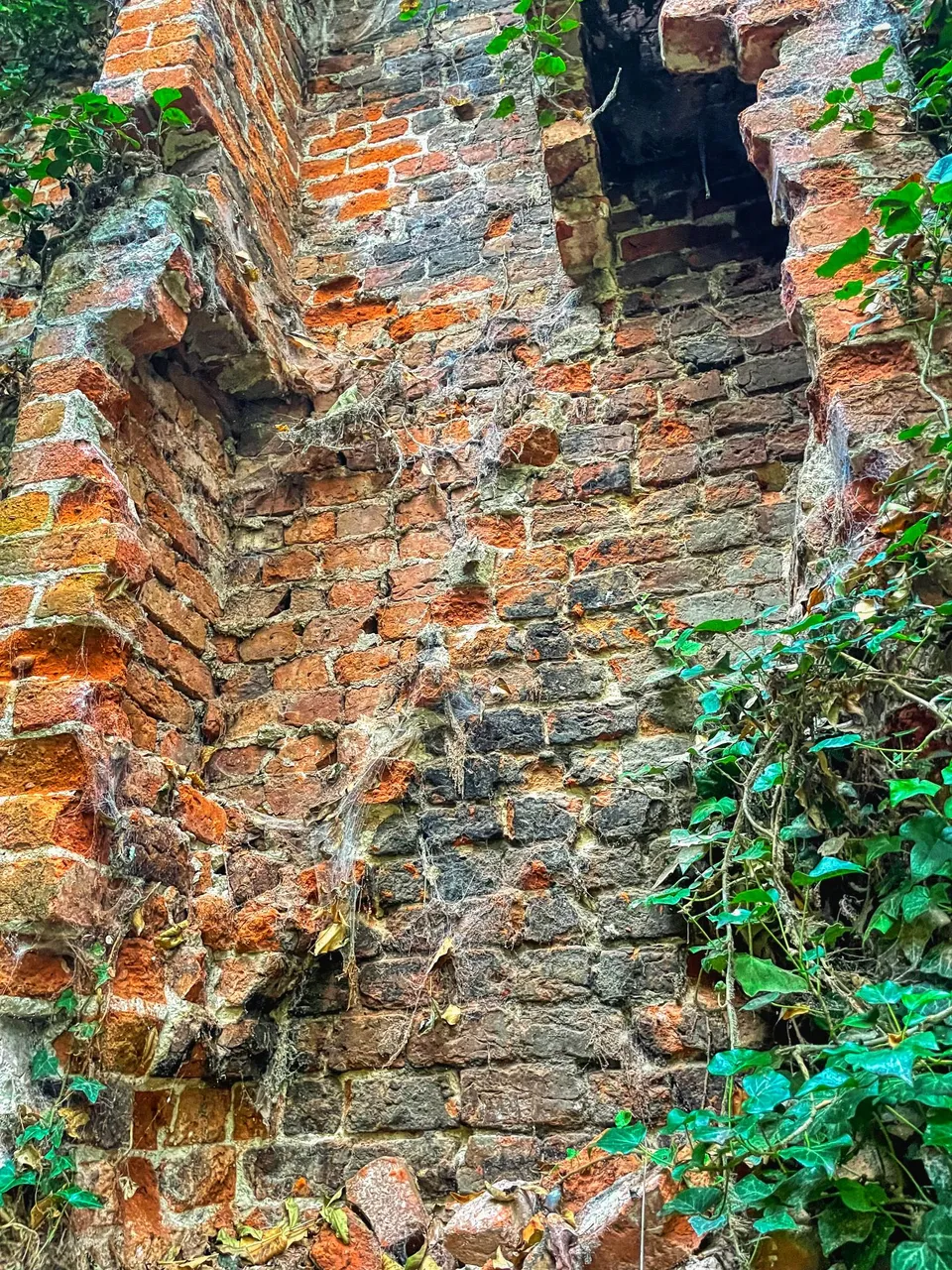
As well as the foliage, spiders have made this ancient hall their home. Thick webs were in abundance.

I don’t have an aversion of arachnoids, but didn’t go as far as poking my fingers in those holes to disturb the local residents.
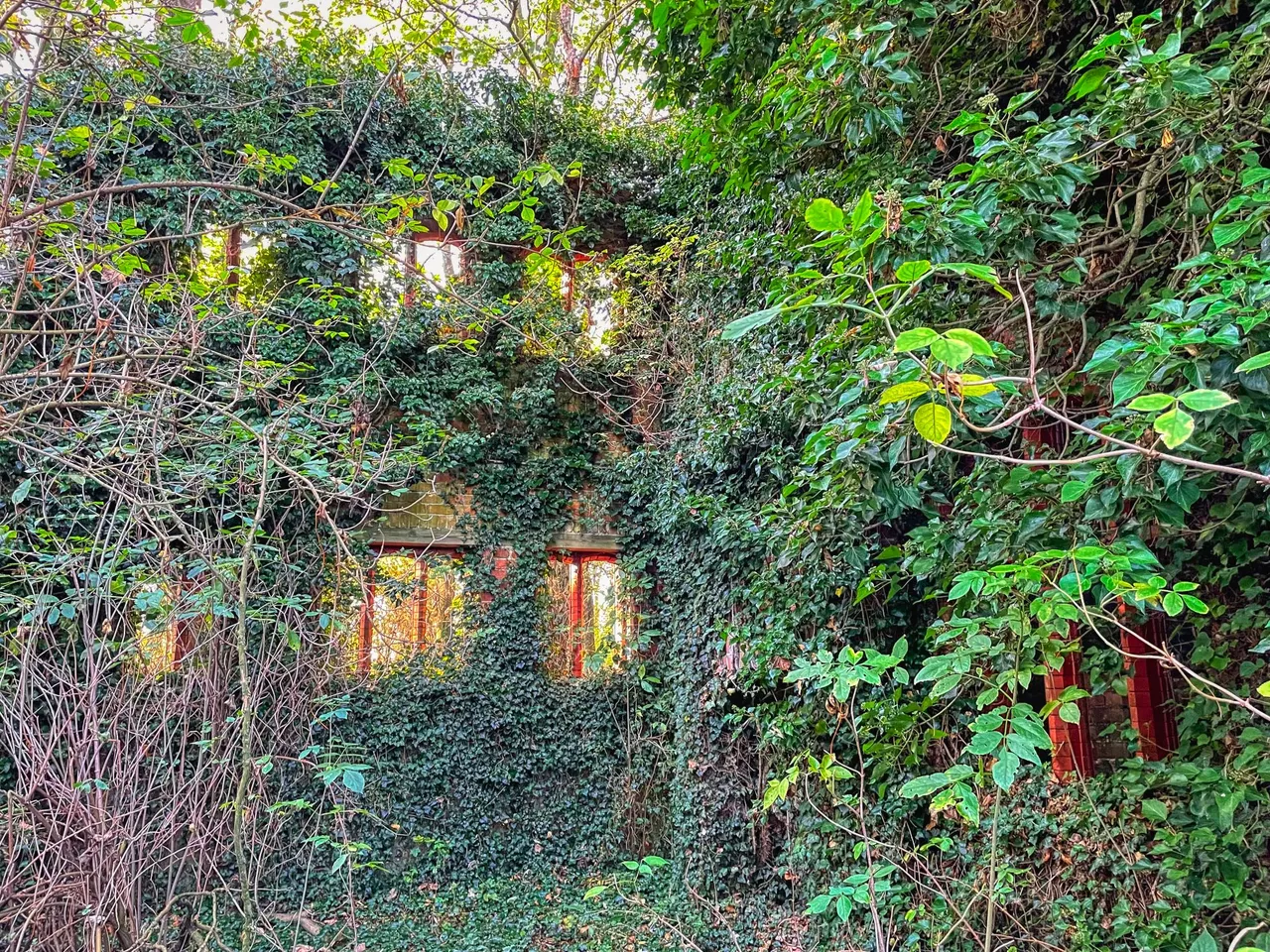
While this looks like an external view of ‘Lydiate Hall’, you needed to simply walk around the exterior to get ‘inside’. To tell the truth it was difficult to figure out what was in or out.
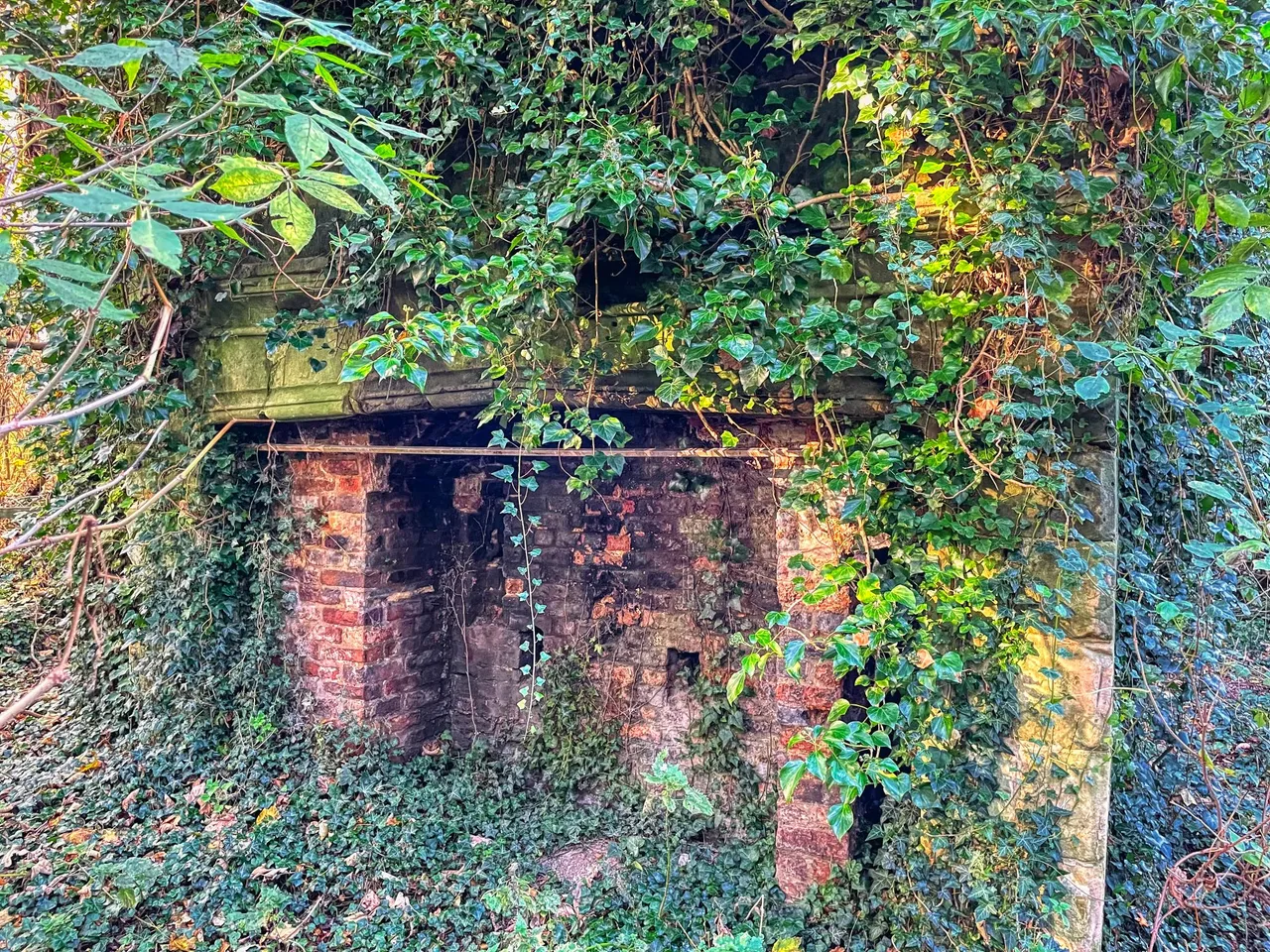
Having done a little research, I know this was the great fireplace where the lords and ladies would perch themselves on long benches feasting on huge hunks of meat, followed by a wiping of dribbling jowls on their sleeves.
People were not diet conscious in the 1500’s and tended to live much shorter lives, those terrible eating habits doing them no favours.
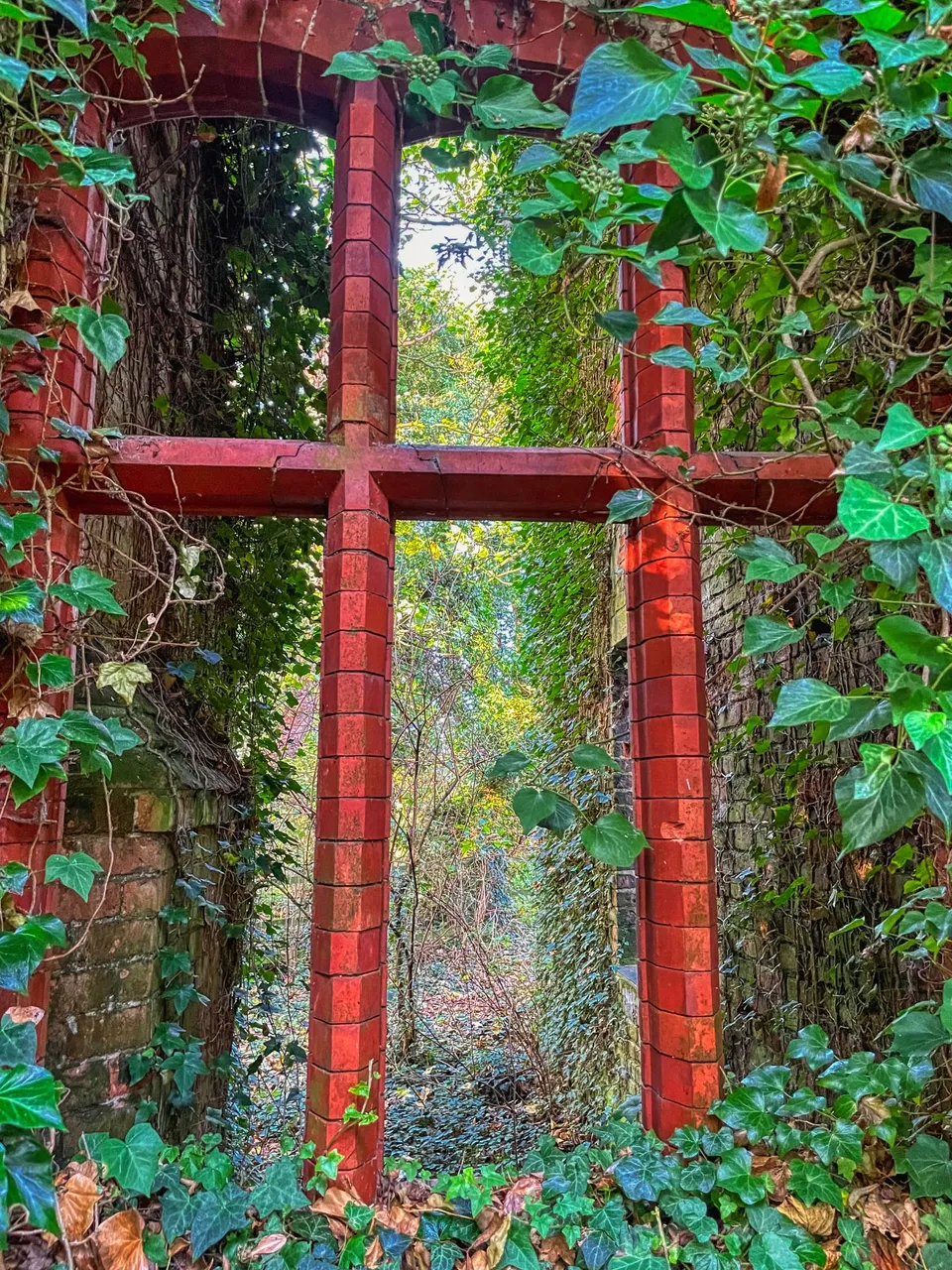
The brickwork does not look over 500 years old, and is extremely well crafted. Those ancestors of ours knew a thing about building houses and halls.

This looks like yet another fireplace. It was all about keeping warm if you were rich and making the poor serfs do all the donkey work.
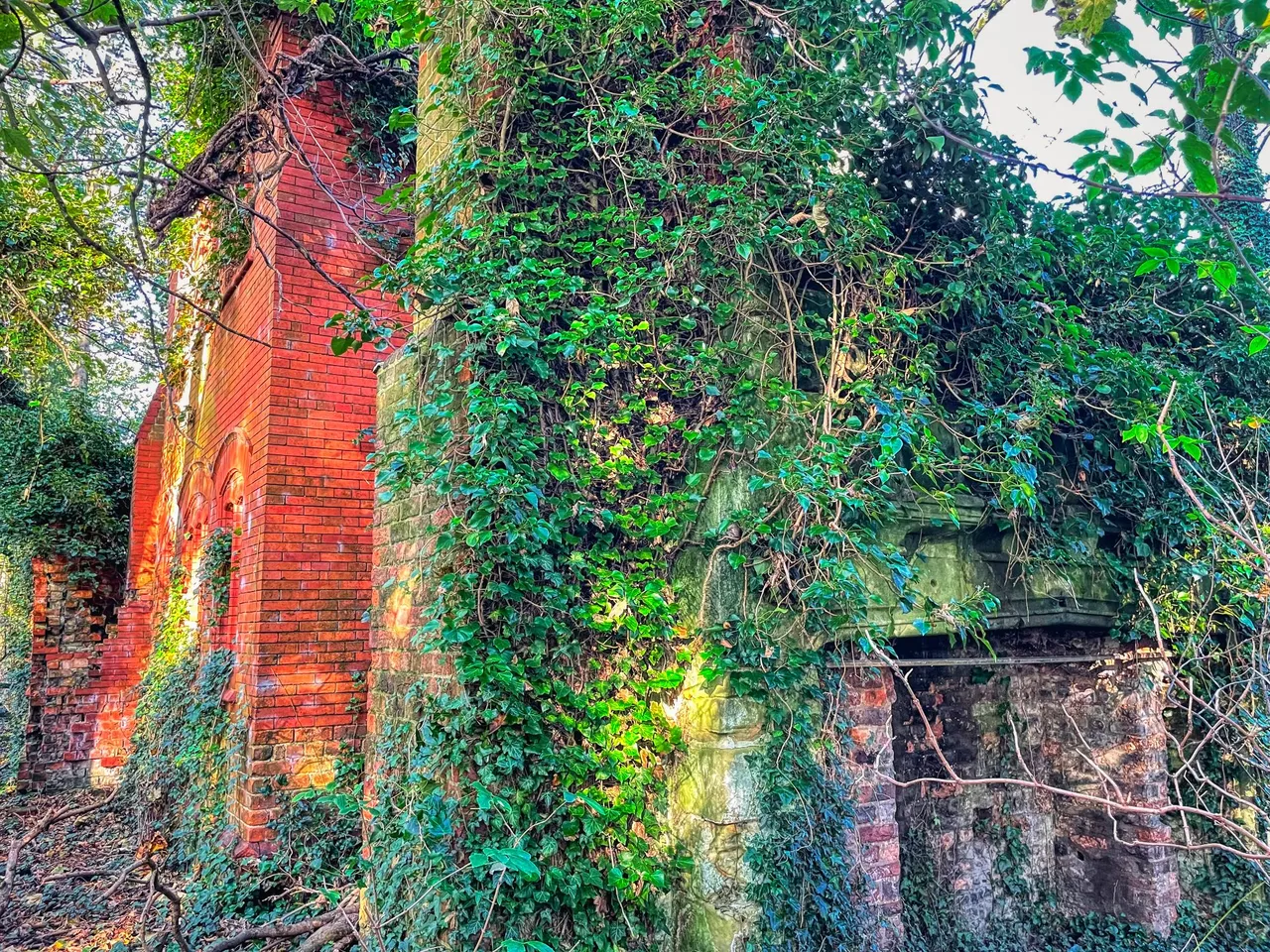
No walls, it must have been really cold living here.
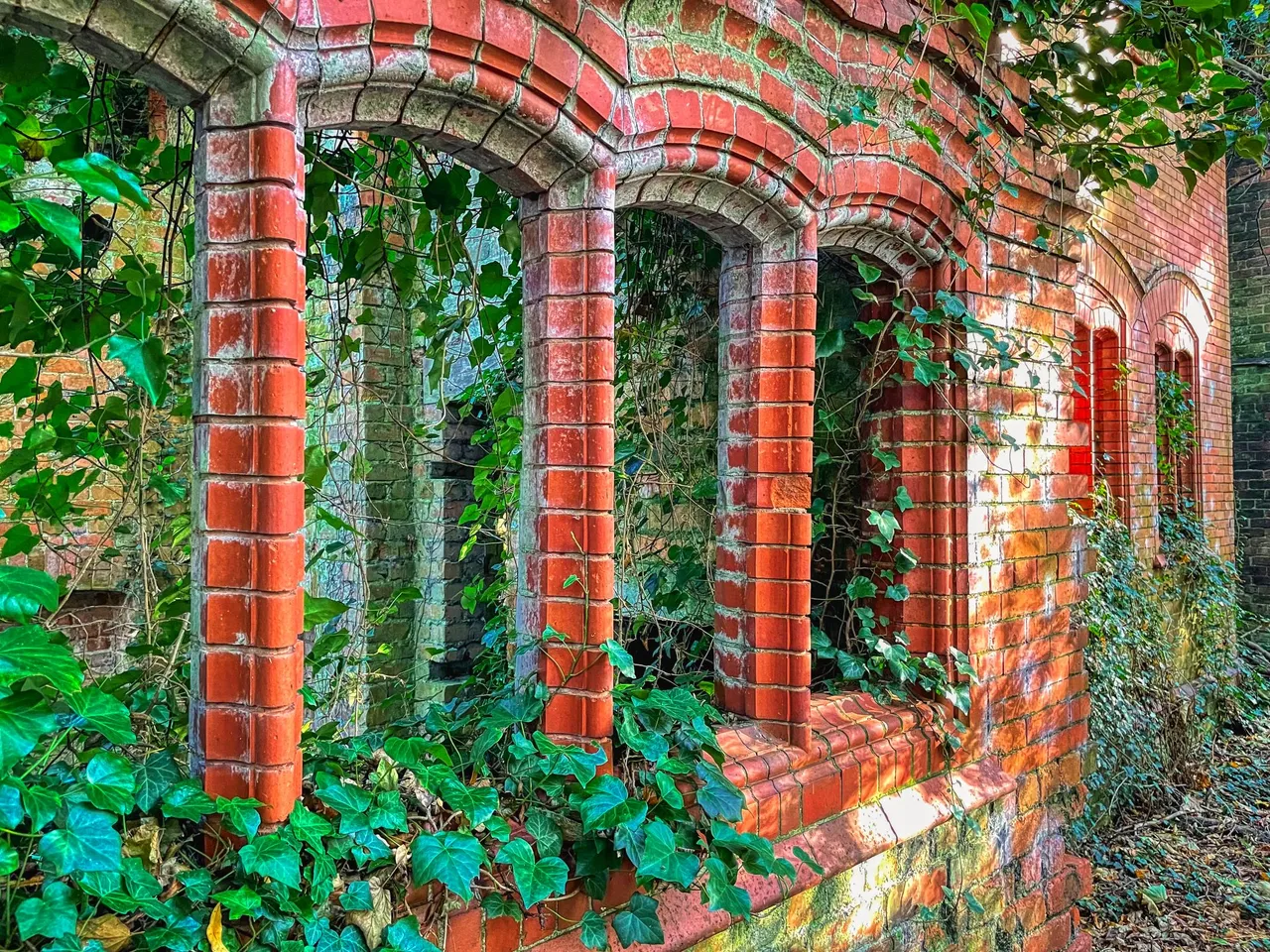
Did they contain glass once; did glass exist in such a time?
Whilst glass was manufactured in the UK from the 13th century, it remained extremely rare to have glass in the windows until the 16th century.
Source
Possibly it did, but if not what were these arches used for besides letting in all the freezing winds and severe cold?
The facts are if you were rich and an aristocrat then living during this period could have been decent, otherwise life was pure misery.
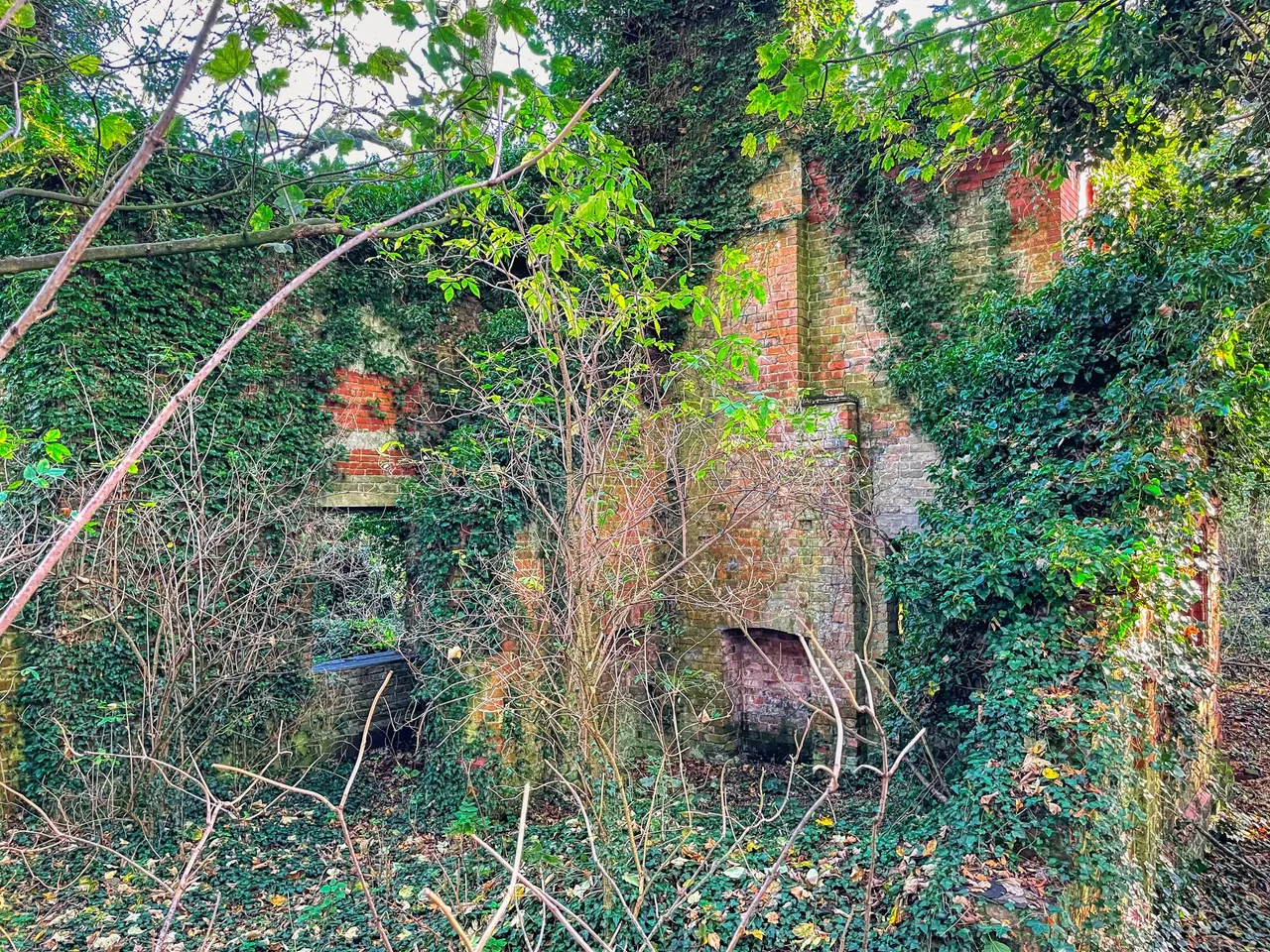
As this old hall has been a ruin since the early 20th century, there was little or no chance of stumbling upon any ancient relics, at least not without a metal detector.
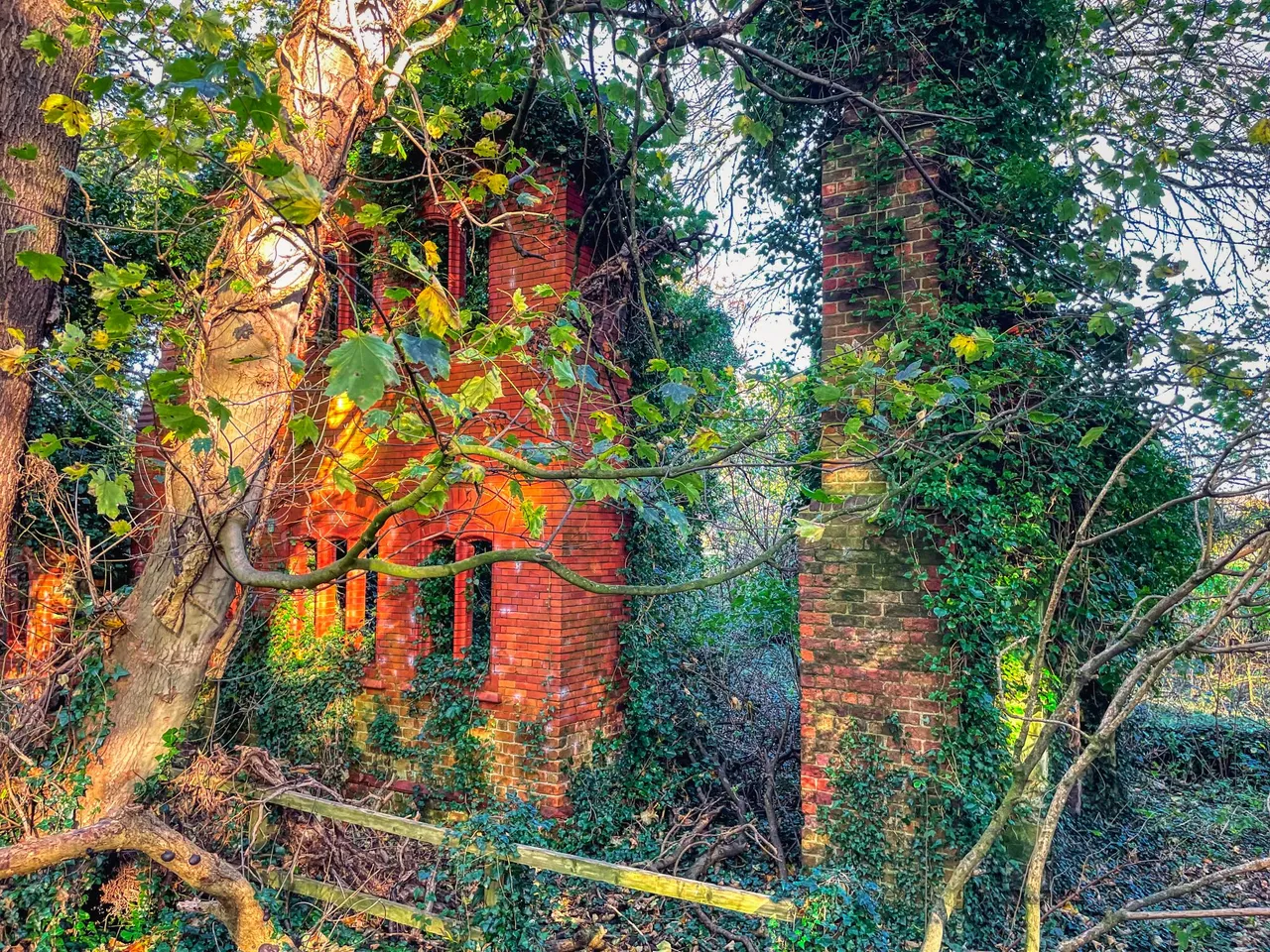
We noticed an easier exit, but that meant crossing a field with a large bovid mammal within. Noticing the lack of tits underneath, I peered into its eye trying to determine its intent.
Pure death looked me back in the face. That fucker was going to charge the minute I stepped into its territory.
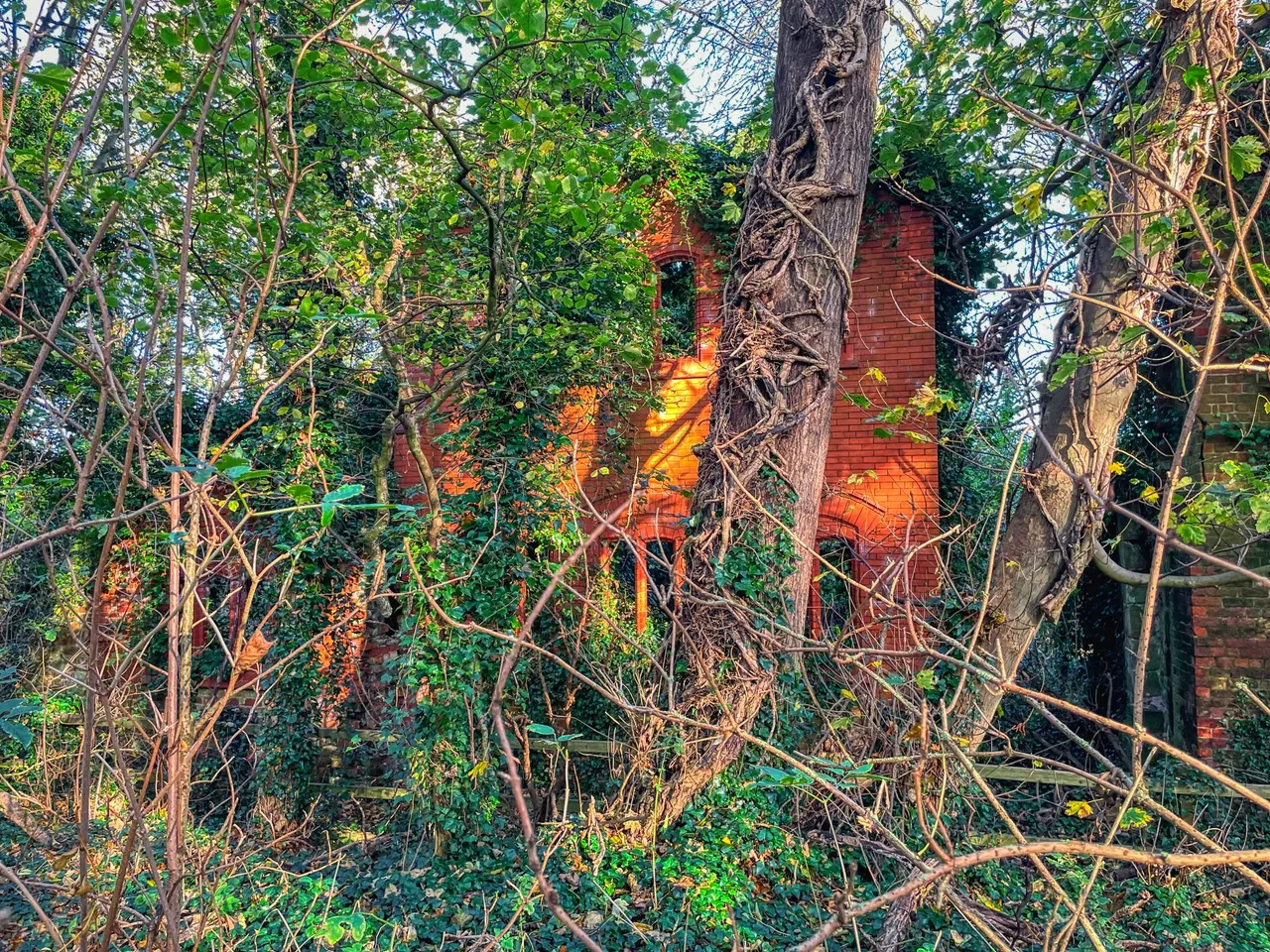
We faced the facts of retracing that bloody route again, and commenced with a groan.

Do you like posting your Urbex content and photography for FREE on Facebook and YouTube? I like to get some form of reward for my work and every time I create I do just that. Take a look at The Urbex Community on HIVE.
If you want to keep creating for FREE then ignore what you are reading. If you want to be like me and gain something other than BUGGER ALL for your work then click here and learn about posting on the HIVE blockchain.






If you found this article so invigorating that you are now a positively googly-eyed, drooling lunatic with dripping saliva or even if you liked it just a bit, then please upvote, comment, rehive, engage me or all of these things.